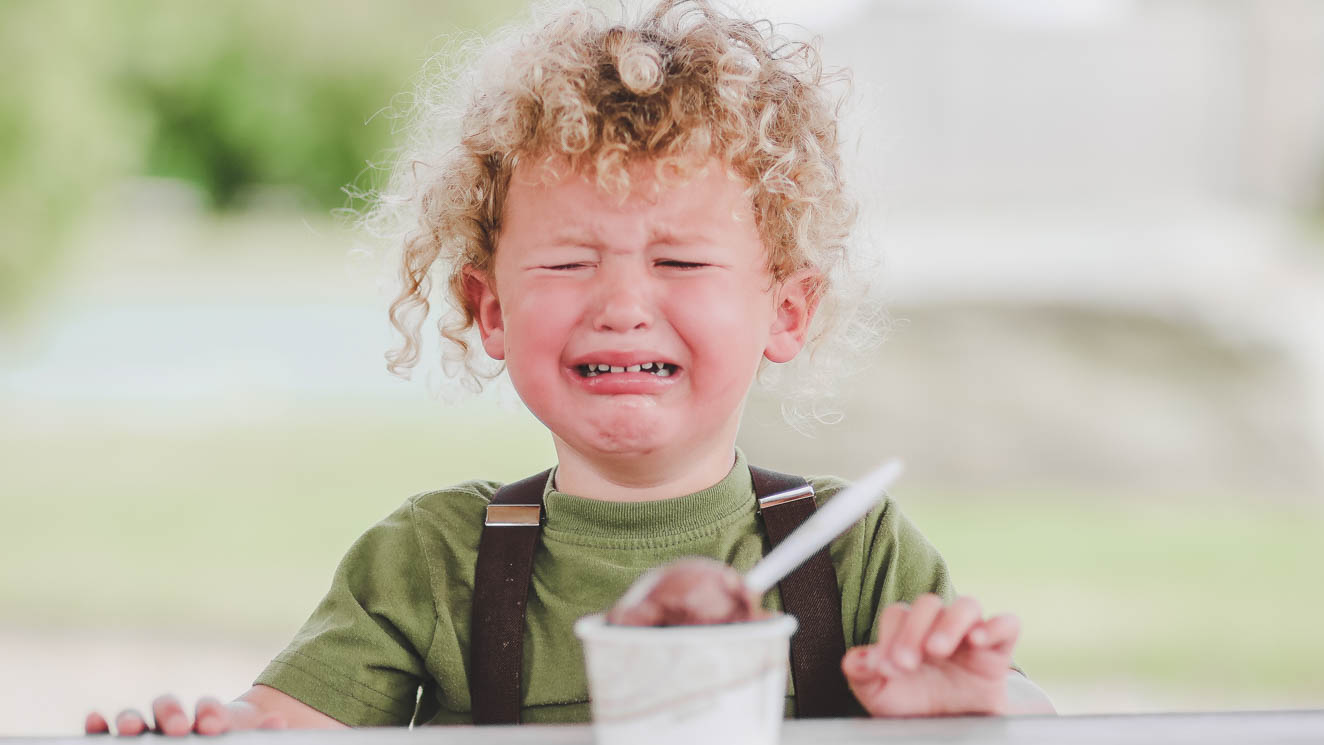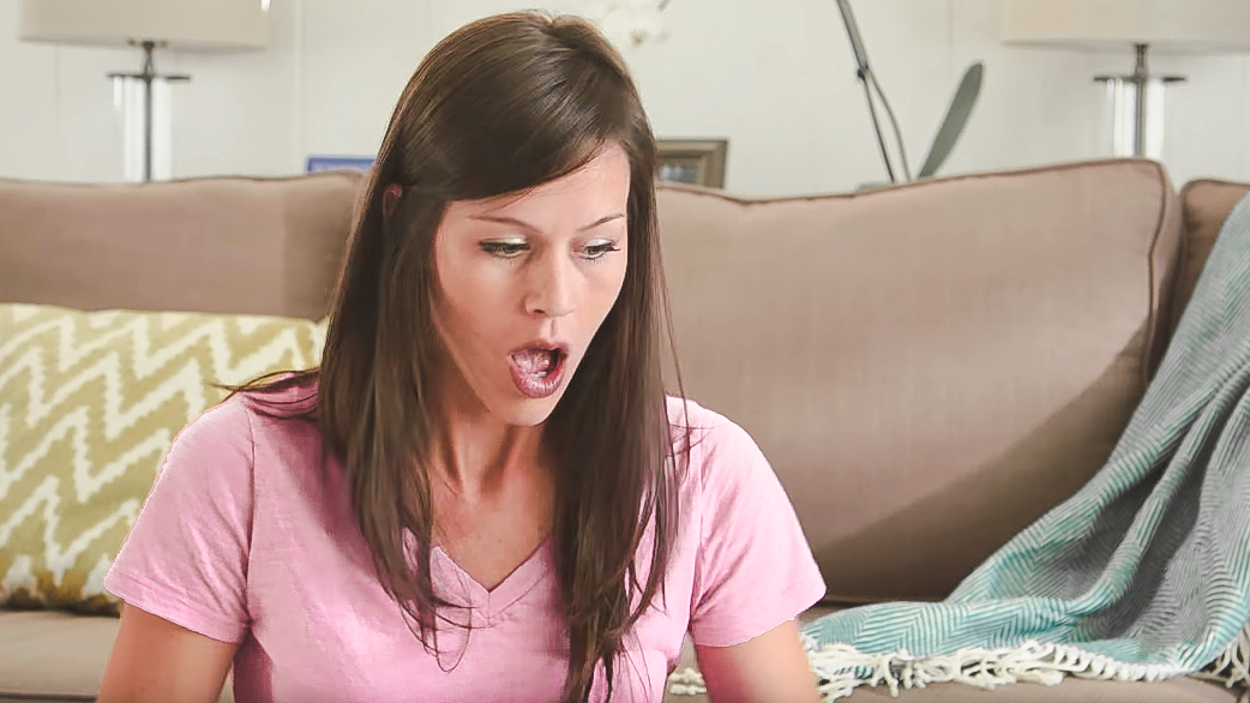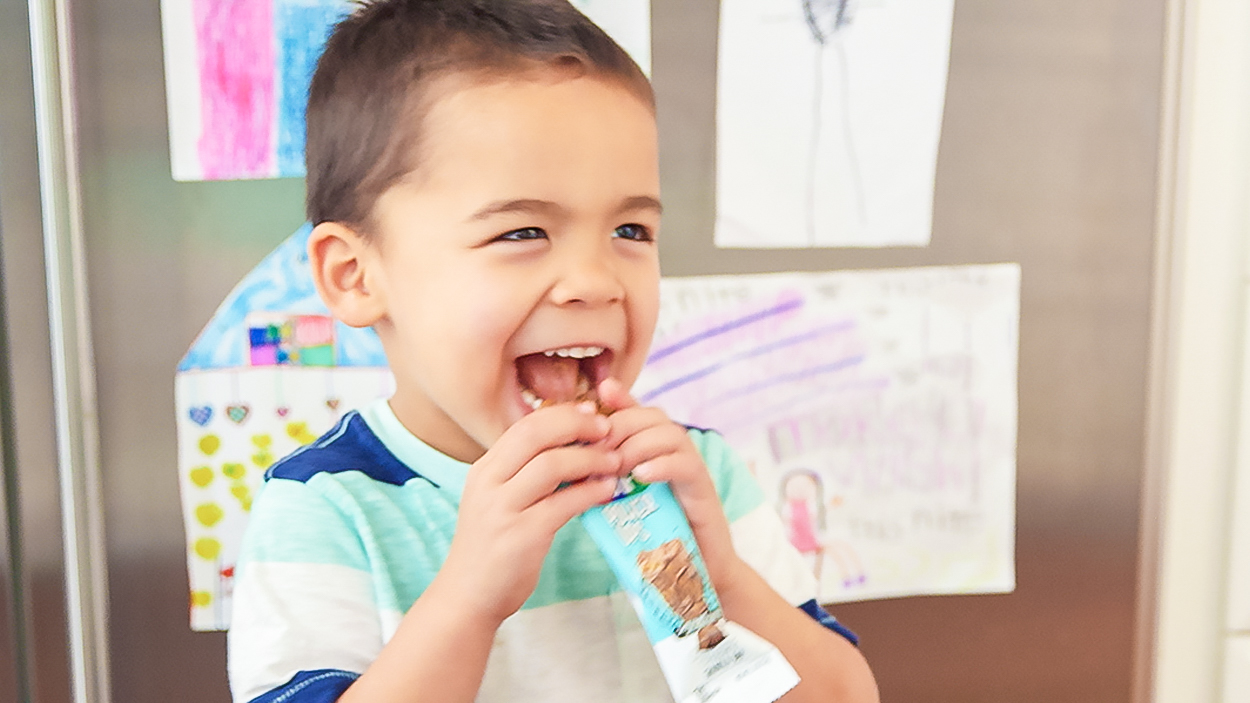

You’re at The Happiest Place on Earth (Target, obviously), and your little one is chilling in the cart while you pick up a few quick things. The outing is going smooth as butter; he’s so rapt with his Cheddar Bunnies he’s forgotten to clamor for that unholy horror that is Tickle Me Elmo in aisle 19, and you’re Taking Care of Business. As you roll up to checkout, your angel drops a Cheddar Bunny, NBD, but when you go to toss it in the trash… things are no bueno. He wants it! It’s his! You show him that it’s smushed. It’s going in the trash because it’s dirty, you say.
Your toddler ERUPTS (as everyone in your line — and some pitying faces from the other six lines — look on.) Screeching. Sobbing. Roaring. As for you: #necksweat.
Welcome to the Terrible Twos.
This phase hits all toddlers, often starting before age two – with some behaviors lasting until as late as age four, according to Jane Rosen, PsyD., the director of IKAR Early Childhood Center and a therapist in private practice in Los Angeles. And it actually serves an important function.
“Suddenly I’m a walking, talking being, and I must assert my own personality,” she said. “It’s a drive to individuation – the same drive that got us to get up and [learn to] walk.”
So, this phase is a good thing, because your little baby is becoming a person. But that doesn’t mean it’s easy to deal with. “No” is their default position, and they say it with their voice, with their body, and with a lot of big (and loud!) emotions. Sometimes in public. (#necksweat). It can be stressful for us parents to see so much raw emotion since, as Rosen puts it, “we’ve spent a lifetime trying to shut down that kind of primitiveness in ourselves.”
How to get your head around the Terrible Twos
First, it can help to understand that this phase is supposed to happen. It’s developmentally hardwired and we should see it like any other big developmental milestone.
“Parents should know that their toddlers must do this and are driven to this,” Rosen said. “So when you find yourself getting angry with them, remember, you didn’t get angry with them when they started walking.”
Secondly, emotional outbursts don’t equate to “being bad.”
“These big feelings seem to come out of nowhere, and sometimes they really do, but we need to understand that it’s not intentional, and we shouldn’t respond as if it’s an adult or even a teenager or even a six-year-old,” Rosen said. “They’re little animals that really can’t process all of this input. They’re just beginning to see ‘I can’t get everything I want’ and ‘there is a rule around this.’“
Given this, toddlers need to have the space get upset, Rosen said.
“They can’t drink. They can’t go to the gym. And they’re riding a roller coaster all day. Most of the time they’re being scooped out of one thing and thrown into something else. And that builds in [them and they] have to let it out. Some tantrums are just therapeutic because they have no other way of dealing with it.”
So what should you do when your toddler goes off the rails?
- Model behavior. Translated, that means “don’t match your kid’s crazytown intensity.” Stay calm.
- Remove thyself. If you’re out and about, remove your kid from the situation so you can keep him safe and let him ride out his emotion. I see you’re having some big feelings but I can’t let you have a tantrum on the floor of Target, you might say. I’m going to keep your body safe and we’re going to go home. You can hold my hand and we’ll walk or I’ll pick you up. And then do it. The idea is to convey that while what they’re doing might not be OK, what they’re feeling is OK – and make that differentiation.
- Don’t distract. How would you feel if you were sobbing and your partner put on his jazz hands and got up in your face and started singing The Wheels on the Bus? You would punch him in the throat! Likewise, don’t tell your kid ‘you’re not upset’ or ‘don’t be upset.’
- Fight your instinct to solve. Yes, this was your role in the baby phase (hungry? I’ll feed you!), but if your toddler is upset, you don’t really have to do anything.
- Go upside down. Have your kid invert his head down below his knees, either from a sitting position or in downward dog style. This position is calming to humans and will immediately quiet the body.
- Change up their environment. Sometimes we’re unaware of how stimulating or overstimulating some places are for little ones. You might be at a gathering at somebody’s house and you’re fine, but for the toddler, it’s like everything’s coming at them at once. So we either need to de-stimulate the environment we’re in or change it. “Going outside is almost an instant cure for everything,” Rosen said. “Our children need tremendously more outside time than they have.”
- Put some pressure on their body, specifically with a firm hug from behind. “We call it the preschool hold,” Rosen said. “It helps them literally regulate their body.” Be sure to ask first.
- Help them take deep breaths. Breathing becomes very shallow in a tantrum, so much so that some kids even pass out. Deep breathing helps quiet the body and mind.
And for those who worry that all this will teach your kid bad habits (Whenever I don’t want to do something I’ll just have a fit!), Rosen said it just doesn’t work like that. “They’re not as canny as you think,” she said. “What they understand is ‘mom and dad see me and are helping me through this tough time.’” Once kids are older, there’s the capability for completely different conversations.
And as you ride the wave that is the Terrible Twos, enjoy some of its upsides. Like, your little chatterbox is so much more interactive! He’s learning so much! And looking at the world with such newness and pure curiosity! And, of course, best of all: your little person is developing a personality and a temperament all of his own – and you have the privilege of getting to know him.
That’s a lot of sweetness right there.







